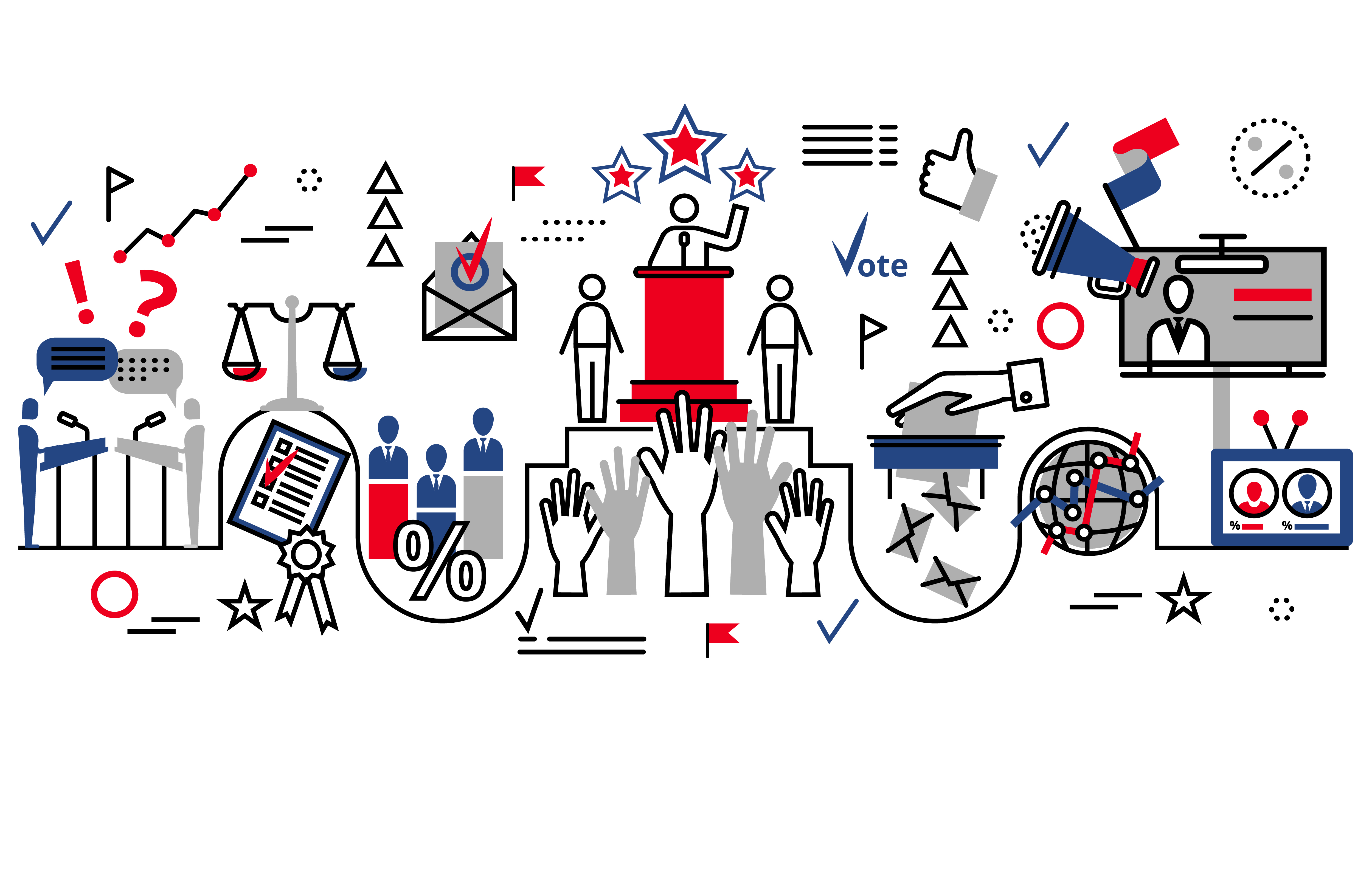
Ready or not, election season is officially here. The chaos of politics is hard enough to keep up with on its own, without the added stress of learning the ins and outs of campaign finance laws. However, in the course of our work as AML professionals, many of us will see political donations made lawfully...as well as those which are questionable. To help us differentiate, let's look further into the various political organizations one could donate to and some of the ways those organizations can use their donations.
Please note that unless otherwise noted, the below information is provided on Federal Election Commission website. Please see https://www.fec.gov/help-candidates-and-committees.
Political party or party committee
A political party can accept contributions[1] from US citizens and legal residents, partnerships and LLCs that file with the IRS as partnerships. Additionally, separate segregated funds (SSFs) and unconnected PACs (Political Action Committees[2]), which are discussed below, are also able to contribute. Foreign nationals, or partnerships or LLCs majority owned by foreign nationals, are prohibited from contributing. Corporations, labor unions and LLCs that file with the IRS as corporations, and super PACs, are also prohibited from contributing.
In practice, an AML analyst may notice donations to a political party from an account part owned by a foreign national.
Finally, minors may contribute, but only if the minor makes the choice knowingly and was not given funds with the express purpose of making the contribution.
In practice, an AML analyst may notice rapid movement of funds through a minor’s account, where the source of funds is cash or a transfer and the final destination of funds is a political party.
For individuals, partnerships and LLCs, the annual contribution limit is up to $35,500 (national party); contributions are publicly disclosed. State and county party contribution limits are determined separately; information on these limits can often be found on a state’s Secretary of State website.
Candidate or candidate committee
The rules of who may contribute and who is prohibited are the same as the political party rules.
For individuals, partnerships and LLCs, the contribution limit is up to $2,800 per election; contributions are publicly disclosed.
PAC
Connected PAC or SSF
A Connected PAC is one connected to a business, labor union, trade group or health organization. The law specifically refers to these organizations as a “separate segregated fund” (SSF); however, colloquially, when you hear PAC, it is often in reference to one of the roughly 2,600 SSFs registered in the US[3].
Only the “restricted class” can be solicited for, and make, contributions. The “restricted class” includes the salaried employees with decision-making authority, shareholders, and these groups’ families. Those in the “restricted class” may make annual contributions up to $5,000 to the SSF.
If the SSF is considered to be multi-candidate, it can contribute up to $5,000 to an individual candidate in an election[4]. If not, the limit is $2,800. The limit is $15,000 per political party per year for multi-candidate SSFs and $35,500 for non-multi-candidate SSFs; contributions are publicly disclosed.
Non-connected PAC
A non-connected PAC is one with no connected organization. There are more than 1,000 non-connected PACs registered in the US and it is the fastest growing category of PAC[5]. A specific type of non-connected PAC is a Leadership PAC, which is set up by a member of Congress with funds being directed towards the re-election of other candidates in the party[6].
The rules of who may contribute and who is prohibited are the same as the political party rules, with annual contribution limits of up to $5,000.
A non-connected PAC has the same contribution limits as a SSF in regards to individual candidates and political parties; contributions are publicly disclosed.
Super PAC
While becoming ever more relevant after the 2010 Citizens United v. Federal Election Commission Supreme Court decision, Super PACs are not legally considered PACs. These entities have no contribution limits because all expenditures are independent expenditures[7] and in fact these entities are referred to legally and registered as independent expenditure-only committees.
Because Super PACs are not allowed to donate directly to a campaign, party or candidate, they are able to accept unlimited contributions from individuals, corporations, labor organizations and other political committees. They may not accept contributions from foreign nationals, federal contractors, national banks or federally chartered corporations; contributions are publicly disclosed.
In practice, an AML analyst concerned about the legitimacy of large dollar payments to an apparent Super PAC could refer to the Super PACs public contribution disclosures.
It might seem like a lot, but the information discussed above is just the tip of the iceberg when it comes to contribution limits and election finance law. Limits often change each year, and states and counties have their own regulations and limits. To help identify unusual political contributions, keep this key points in mind:
- Know the age, occupation and citizenship of the individual (or business control person) contributing
- Restrictions exist for minors
- Foreign nationals can never contribute
- Federal contractors can never contribute.
- Check the FEC website to ascertain the legitimacy of the organization accepting the contributions and the receipt of the contributions you observed
- Search https://www.fec.gov/data/ by contributor or recipient.
Knowing and practicing the above points will push your AML analysis above and beyond. The rest is up to you!
[1] Contributions are gifts of money; gifts of goods and services (in-kind contributions); loans and guarantees or endorsements of loans; and advances of funds
[2] https://www.polyas.com/election-glossary/political-action-committee
[3] https://ballotpedia.org/Number_of_political_action_committees
[4] https://ballotpedia.org/PACs_and_Super_PACs
[5] https://ballotpedia.org/Number_of_political_action_committees
[6] https://www.polyas.com/election-glossary/political-action-committee
[7] An independent expenditure is one made for a communication that expressly advocates the election or defeat of a clearly identified candidate and which is not made in coordination with any candidate, or his or her authorized committees or agents, or a political party committee or its agents. An independent expenditure is not considered a contribution and there are no limits on how much can be spent on independent expenditures.

